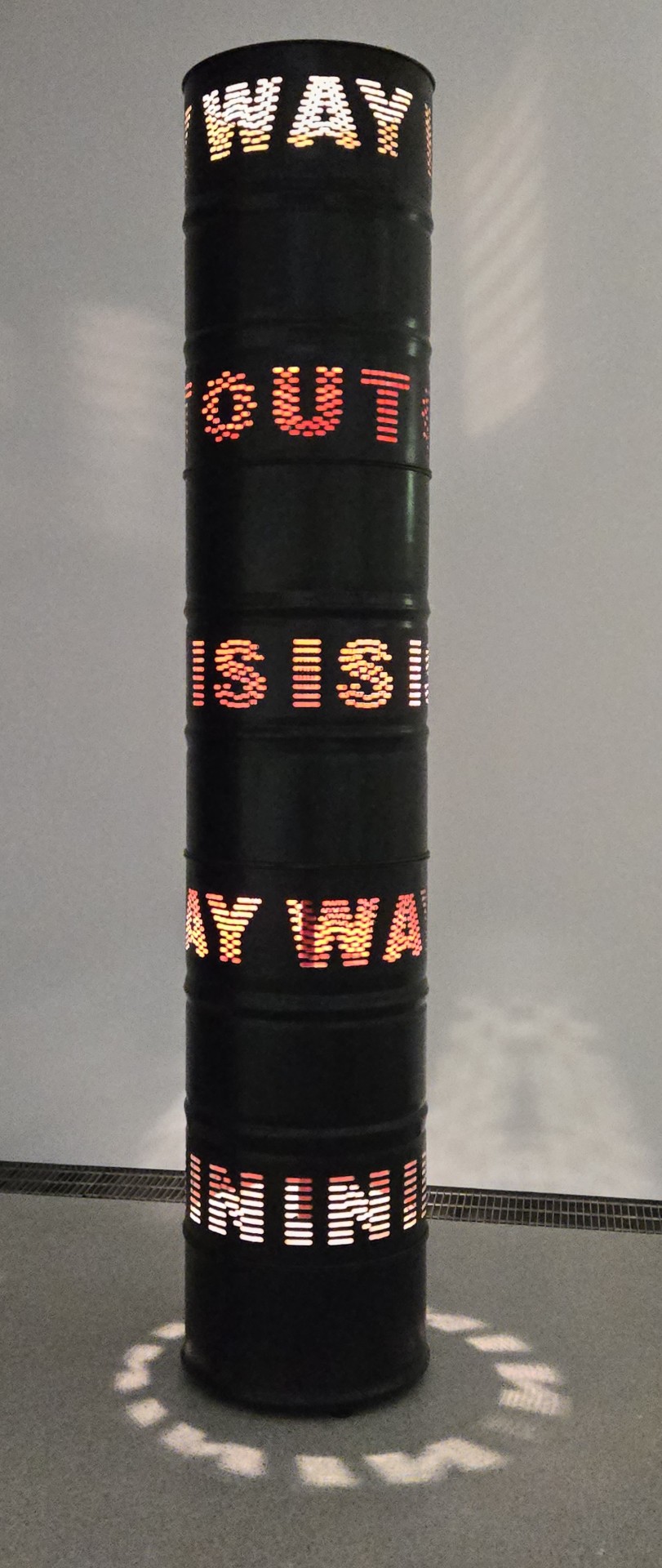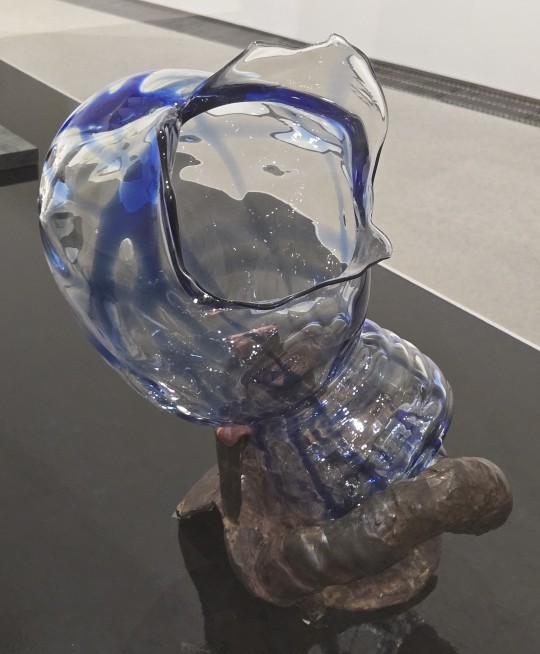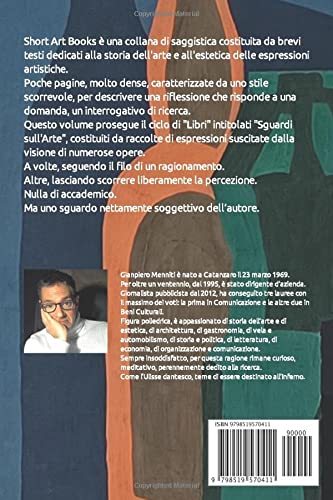#MuMok
Explore tagged Tumblr posts
Text





Park McArthur’s exhibition Contact M at mumok
13 notes
·
View notes
Text

Július Koller: One Man Anti Show, Edited by Daniel Grúň, Kathrin Rhomberg, and Georg Schöllhammer, mumok – Museum moderner Kunst Stiftung Ludwig, Wien / Verlag der Buchhandlung Walter König, Köln, 2016 [The Július Koller Society, Bratislava. Art: © The estate of Július Koller]
#graphic design#art#photography#visual writing#catalogue#catalog#cover#július koller#daniel grúň#kathrin rhomberg#georg schöllhammer#mumok#verlag der buchhandlung walther könig#július koller society#2010s
11 notes
·
View notes
Text



VANILLA EYES by Pakui Hardware Solo show at mumok, Vienna, 2016 - https://www.pakuihardware.org/index.php?/ugnius-gelguda-with-neringa-cerniauskaite/vanilla-eyes-2016-mumok-vienna/
5 notes
·
View notes
Text
Igor and Svetlana Kopystiansky: Projects
Igor and Svetlana Kopystiansky: Incidents (1996/7)
Igor and Svetlana Kopystiansky: The Day Before Tomorrow (1999)
Svetlana Kopystiansky: Works and Projects
Igor Kopystiansky: Works and Projects
Igor and Svetlana Kopystiansky: Archive Documents
Video Works. Vimeo
Video Works. YouTube
Bibliography
Books by Igor and Svetlana Kopystiansky
Works by Igor and Svetlana Kopystiansky are represented in permanent collections of the Museum of Modern Art, Metropolitan Museum and Whitney Museum of American Art in New York, Art Institute of Chicago, Museum of Fine Arts, Houston, Smithsonian American Art Museum, Washington D.C.; Henry Art Gallery in Seattle; Zimmerli Art Museum, Rutgers University, New Jersey; Musée National d'Art Moderne Center Pompidou, Paris; Musée d'Art Moderne de Saint-Etienne Métropole, France; Tate Modern, London; Art Gallery of New South Wales, Sydney; Museo Nacional Reina Sofia; Folkwang Museum in Essen; Ludwig Forum for International Art, Aachen; Berlinische Galerie; Museum für Moderne Kunst, Frankfurt am Main; MUMOK Vienna, Austria; Centre for Contemporary Art Luigi Pecci, Prato, Italy; Frac Corsica, France; MOCAK, Museum of Contemporary Art Krakow, Poland; Muzeum Sztuki Lodz, Poland.
Archives by Igor and Svetlana Kopystiansky are located at the Centre Pompidou, Kandinsky Library.
Works by Igor and Svetlana Kopystiansky were exhibited at venues including: Henry Art Gallery, Seattle (2017-2018); MFAH Texas (2017); MoMA, New York (2012); Center Pompidou, Paris (2015, 2011, 2010, 2009); Tate Modern London (2010, 2011-2012), Metropolitan Museum, New York (2013-2014, 2010-11, 2001,1997); Center Pompidou Metz (2011-2012); Smithsonian American Art Museum (2015, 2010-11); Art Institute of Chicago, (1996, 1997-1998, 2008); The Museum of Contemporary Art, Chicago (1999); Scottsdale Museum of Contemporary Art, Arizona (2005); Fine Arts Center UMass, Amherst, Massachusetts (2005); Musée d’Art Moderne de Saint-Etienne, France (2010); Tate Liverpool (1999); Whitechapel Art Gallery, London (1999); MMK Frankfurt/Main (2011, 2010, 1999); Kunsthalle Düsseldorf (1992, 1994, 1995); Kunstmuseum Düsseldorf (2000); Folkwang Museum, Essen (2000); Sprengel Museum Hannover(2002); Kunsthalle Fridericianum, Kassel (2005-2006, 1999); Deichtorhallen Hamburg ( 2011-2012), Kunsthalle zu Kiel (2011-12); Kunst-Werke Berlin (1999); Reina Sofia, Madrid (1994-1995); S.M.A.K. Gent (2009); GAMeC, Bergamo (2011); Museum of Modern Art EMMA, Finland (2007); AGNSW, Sydney (1992, 2003, 2005, 2008, 2009); Kunsthalle Krems, Austria (2012); MARCO, Vigo, Spain (2007); MUMOK, Vienna, (1989) and others.
Igor and Svetlana participated in international exhibitions including Sculpture Projects Münster 1997 (Svetlana), Documenta 11 (2002) and biennials in Venice 1988 (Aperto curated by Dan Cameron), Sydney 1992 (curated by Anthony Bond), Sao Paulo1994, (curated by Nelson Aguilar), Istanbul 1995 (curated by René Block), Johannesburg 1997 (curated by Okwui Enwezor), Lyon 1997 (curated by Harald Szeemann), Liverpool 1999, Triennial of Small Sculpture” Fellbach, Germany 2004 (curated by Jean-Christophe Ammann), Triennial of Small Sculpture Stuttgart 1998 and others.
#svetlana kopystiansky#igor kopystiansky#smithsonian american art museum#whitney museum of american art#centre pompidou#musee d'art moderne st.etienne#mmk frankfurt#mumok#moma#video art#appropriation art#tate modern#agnsw
0 notes
Text

MEDARDO ROSSO
Medardo Rosso è stato uno scultore tra i maggiori fautori della scultura moderna, diventato famoso per le sue sculture non finite
0 notes
Text
















Wat? Dreamland (1959), Way Out Is Way In (2009), Fidel Prism Poem Machine (1965), Get Rid of Government Time (1962), Untitled (1967), Material Alphabet (1970), OOOP (1969), Hanging Gardens of Rock City (1970), Force Fields (1970), Inner Space Outer Space 1 (1969), Windows (Starskins) (1979) , Queen of Hearts, Queen of Diamonds (1980), , Headborn (1987-1990), Inner Space (1961) en Sweet Solar Dreams III (2002-2022)
Waar? Tentoonstelling Liliane Lijn – Arise Alive in het Museum Moderner Kunst (MUMOK), Wenen
Wanneer? 6 maart 2025
Een week in Wenen moet wel een week vol kunst worden. Secession, Klimt, Schiele en anderen wachten om nader ontdekt te worden. Mijn vlucht verliep voorspoedig en dus heb ik nog een hele middag voor me als ik in het hotel arriveer. Ik besluit mijn kunstreis te beginnen in onze eigen tijd en wel met een bezoek aan het MUMOK, das Museum Moderner Kunst. Een paar verdiepingen van het museum zijn gesloten, maar drie ondergrondse lagen zijn gewijd aan een presentatie uit de vaste collectie van het museum. Hier vinden we kunst van onder meer George Segal, Duane Hanson, June Paik, Yoko Ono, Daniel Spoerri en Armand. Twee bovengrondse etages zijn gewijd aan werk van een kunstenaar waar ik nog nooit van heb gehoord: Liane Lijn. Zij werd in 1939 geboren in New York en studeerde kunstgeschiedenis en archeologie in Parijs. Daar maakte ze kennis met het surrealisme. De nadruk van deze stroming op dromen en het onderbewuste had grote invloed op het vroege werk van Lijn. Na enige tijd begon ze echter als een van de eerste kunstenaars kinetische werken te maken, waarbij licht, beweging en energieoverdracht centraal staan. In 1966 vestigde ze zich in Londen, waar ze nog steeds woont en werkt. Het werk dat ze in Londen maakte had feministische kenmerken. Daarbij verbond ze mythische elementen met high-tec ontwikkelingen.
Op de tentoonstelling zijn veel werken te zien die bewegen. Vanwege de kwetsbaarheid van deze werken zijn deze gedurende bepaalde tijdvakken actief. In het eerste deel van de tentoonstelling zijn een aantal van dergelijke kunstwerken te zien die alle een verbinding met taal hebben. De grote draaiende en lichtgevende pilaar met de titel Way Out is Way In valt daarbij onmiddellijk in het oog. De woorden zijn ontleed aan de antiroman Naked Lunch (1959) door de Amerikaanse auteur William Burroughs. Andere taal-gerelateerde installaties zijn bijvoorbeeld Fidel Prism Poem Machine en Get Rid of Government Time.
Rond 1970 maakt Lijn een aantal werken op papier, waarbij grafische vormen een grote rol spelen. Untitled bevat elektronische symbolen en getallen. Material Alphabets is een serie waarin grafische symbolen worden gebruikt. Eén daarvan doet me denken aan Stijl-kunstenaar Bart van der Lek. Ook in zijn werk komen vierkantjes, rechthoekjes en staafjes voor, maar dan in primaire kleuren. Ook het werk OOOP (1969) roept associaties op, echter niet met een beeldend kunstenaar maar met een dichter. Het doet mij sterk denken aan de grafische poëzie van de Vlaming Paul van Ostaijen.
Hanging Gardens of Rock City behoort tot een serie van vier fotocollages waarin Lijn de bovenste lagen van New Yorks wolkenkrabbers met elkaar verbindt tot surrealistische wandelroutes. In de serie Force Fields combineert Lijn simpele vormen met lijnen, terwijl in de serie Inner Space Outer Space conische vormen voorkomen die we herkennen uit haar driedimensionale werk.
Inmiddels is wel duidelijk dat Liliane Lijn zich als kunstenaar niet beperkt tot één medium of één bepaalde stijl. Maar mocht iemand nog twijfelen aan haar veelzijdigheid, dan geeft de rest van de tentoonstelling beslist de doorslag. Haar werken variëren van zachte pastel op handgeschept papier (Windows (Starskins)), aluminium (Queen of Hearts, Queen of Diamonds), glas (Headborn ), plexiglas (Inner Space), brons en andere materialen (Sweet Solar Dreams III).
Afgezien van Pablo Picasso kan ik me weinig kunstenaars voor de geest halen die een zo afwisselend en verrassend veelzijdig oeuvre hebben geproduceerd als Liliane Lijn. De tentoonstelling geeft een indrukwekkend beeld van die veelzijdigheid. Mijn kennismaking met deze kunstenaar vormt beslist een veelbelovend begin van een weekje kunst in Wenen.
5 notes
·
View notes
Text

Da: SGUARDI SULL'ARTE LIBRO SECONDO - di Gianpiero Menniti
GLI STRATI DEL TEMPO
«Fino alla nascita dei décollage, nel 1953, io facevo della pittura neo-geometrica. Avevo studiato tutti gli stili e tutti i più grandi maestri, da Kandinskij a Mondrian, da Picasso a Matisse. Poi mi trasferii per due anni negli Stati Uniti, e realizzai una mostra anche lì. Quando tornai in Italia, non volevo più dipingere, perché ero giunto alla conclusione che tutto ormai, in pittura, fosse stato fatto. Una mattina del ’53, mi trovavo nel centro di Roma, e osservavo i muri completamente tappezzati di manifesti pubblicitari lacerati. Ciò mi colpì moltissimo, e pensai: ‘Ecco le nuove immagini che io devo dare al pubblico’. Nessuno aveva mai fatto questo. Così è nato il décollage: è stata una sorta di… illuminazione zen. Allora uscivo di notte dal mio studio e rubavo i manifesti dai muri. Una sera venne a vedere i miei lavori un critico giovane e molto intelligente, un filologo, Emilio Villa. Fu entusiasta, e mi disse: ‘Tu stai inventando una nuova forma d’arte, che va al di là della pittura’. Mi invitò ad allestire una mostra con sei pittori romani sul Tevere. All’inaugurazione c’era un critico americano, il quale sostenne nella sua recensione che l’unico a proporre un nuovo messaggio ero io. Mi definì ‘neo-dadaista’.».
Con queste parole Mimmo Rotella (Catanzaro 1918 – Milano, 8 gennaio 2006) rievocava la nascita del "decollage", intuizione capace d'innovare il linguaggio artistico del secondo Novecento, inserendosi nella scia della Pop Art, dell'Informale, del Nouveau Réalisme, del NeoDada.
Tuttavia, gli schemi non raccontano.
Indicano un percorso, delle assonanze, dei richiami.
Non bastano: gli artisti fanno storia a sé.
La libertà in quegli anni convulsi è massima.
La tecnica diviene essa stessa fenomeno creativo, così prorompente da ribaltare il tradizionale rapporto tra significante e significato, fino a una semiosi inaspettata, controversa.
Eppure dotata di una poetica profonda, ammessa, come nel caso di Rotella, all'antico mistero del tempo e delle sue infinite narrazioni.
Lo "strappo" diventa scoperta.
E quanto rimane è rappresentazione artistica di un divenire che annulla le distanze, saldando passato e presente.
Suggestione del perenne.
Nascosto.
Svelato.
- Mimmo Rotella, "Europa di notte", 1961, Mumok, Vienna


13 notes
·
View notes
Text

Nicola Brunnhuber, ohne Titel, 2012, hier im Mumok 2018 mit Julia Haller, Kuku, 2015
2 notes
·
View notes
Text

Anna-Sophie Berger public lecture “Wealth and Propriety” 10.25 6PM This Friday at 6 pm, we are pleased to invite you to “Wealth and Virtue” - an artist talk by Anna-Sophie Berger. The title of the lecture refers to a seemingly simple diagram in which the characteristics of clothes, such as their length and thickness, are linked to socio-economic and moral aspects. Since 2022, “Wealth and Propriety” has defined a significant part of the artist’s field of interest and become the basis for a series of exhibitions and artworks that have been shown in Mexico City, Los Angeles and Vienna, among other places. The event is free to attend and will be held in English. It is organized by Medūza in collaboration with Rupert. The lecture will be followed by a Q&A session moderated by curator JL Murtaugh. Anna-Sophie Berger (b. 1989, Vienna, Austria) is an artist living and working in New York and Vienna. She has had solo exhibitions at Cell Project Space, London (2019); MUMOK, Vienna (2016); Ludlow 38, New York (2015), among others.
3 notes
·
View notes
Text



https://www.contemporaryartdaily.com/project/adam-pendleton-at-mumok-vienna-28100
7 notes
·
View notes
Text

Exhibition view Collaborations / Collaborations IRWIN, 1998. Photo: Oliver Ottenschläger, © mumok
9 notes
·
View notes
Note
Heyooo ☺️ Ich werde für Harrys Konzert in Wien sein und hab gleich noch einige Tage in Wien für Stadtferien angehängt :)
Hast du irgendwelche (Insider-)Tipps, was ich tun könnte? Z.B. Cafés oder Restaurants, oder Museen, die du magst (und es darf ruhig auch ein wenig ausserhalb der Stadt sein). Ich war vor einigen Jahren schon mal in Wien und hab rein theoretisch den ganzen hardcore Touristenkram bereits gesehen, aber falls du trotzdem irgendwelche „touristischen“ Tipps hast, sehe ich mir die natürlich auch gerne an :D
Danke im Voraus und ich wünsche dir noch einen wunderschönen Tag 🥰
uiiii ja let me try, jedes Mal wenn wer fragt is mein Kopf einfach leer hahaha
Cafes/ Restaurants: Siebenstern, Disco Volante, Liebling, Europa, Erich/ Ulrich, Propeller, Tata 7, Budapest Bistro, Swing Kitchen (bestes veganes Fastfood der Welt trust me), Edison, Budapest Bagel, Neni am Naschmarkt (Naschmarkt generell 10/10 da findest du immer irgendwas zu essen, auf das du Bock hast), Cafe Frida (auch generell Yppenplatz findet man auch immer was), Palmenhaus (pricey aber fancy), Veganista für tiptop Eis
Museen kann ich immer das naturhistorische Museum, MUMOK und Albertina empfehlen, generell is es ne gute Route wenn man zum Beispiel am Museumsquartier startet und dann bis zur spanisches Hofreitschule durchgeht, da nimmt man viele Sehenswürdigkeiten mit und das is ein guter Spaziergang. Sonst noch Burggarten oder auf die Gloriette raus (in Schönbrunn rein muss man echt nicht, das lohnt sich nicht) und wir haben auch einen echt schönen botanischen Garten am Belvedere, am Burggarten ist auch das Schmetterlingshaus, das ich mega süss finde. Wenn das Wetter gut is kannst du gut an die alte Donau (dort kann man auch baden) oder auf den Donaukanal, dort is es einfach relativ chillig zum sitzen und was trinken. Prater is auch cool, selbst wenn man mit nichts fahren will is es gut zum einfach mal durchgehen und anschauen.
Ich würde halt alle so mega touri mäßigen Restaurants und Cafes wie Central oder Sacher auslassen, das lohnt sich meiner Meinung nach wirklich null.
7 notes
·
View notes
Text

"Igor & Svetlana Kopystiansky". The Lithuanian National Museum of Art. 2023. Foreword: Arūnas Gelūnas. Texts by Michel Gauthier, John G. Hahnhardt. Quotations from texts about Kopystiansky’s by Kai-Uwe Hemken, Philippe-Alain Michaud, Anthony Spira, Adam D. Weinberg.(Lithuanian, English, French) ISBN 9786094261824
0 notes
Text
Memórias deste Dia: 23 de Abril
Playlist com vídeos deste dia 2022 Viena – Austria Viena – Hotel Mercure Vienna First Viena – Câmara Municipal (Wiener Rathaus) Viena – mumok (Museu de Arte Moderna) Viena – Museu Leopold Viena – Biblioteca Nacional Austríaca Booking.com
0 notes



